Drinking Water Protection
- Drinking Water Protection Home
- About Us
- A-Z Index of Contaminants in Water
- Community Public Water Supply
- Drinking Water Grants and Loans
- Drinking Water Institute
- Drinking Water in Schools and Child Cares
- Drinking Water Revolving Fund
- Laws and Rules
- Noncommunity Public Water Supply
- Source Water Protection
- Water Operator and Certification Training
- Drinking Water Protection Contacts
Related Topics
- Annual Reports
- Drinking Water Risk Communication Toolkit
- Drinking Water Protection External Resources
- Fact Sheets
- Forms
- Invisible Heroes Videos: Minnesota's Drinking Water Providers
- Noncom Notes Newsletter
- Sample Collection Procedures (videos, pictures, written instructions)
- Waterline Newsletter
Related Sites
- 10 States Standards
- Clean Water Fund
- Health Risk Assessment – Guidance Values and Standards for Water
- Minnesota Well Index
- Water and Health
- Wells and Borings
Environmental Health Division
Metro Transit Helps Saints Save Water in New Ballpark
From the Waterline
Quarterly Newsletter of the Minnesota Department of Health Public Water Supply Unit, Waterline
A complete list of feature stories can be found on the Waterline webpage.
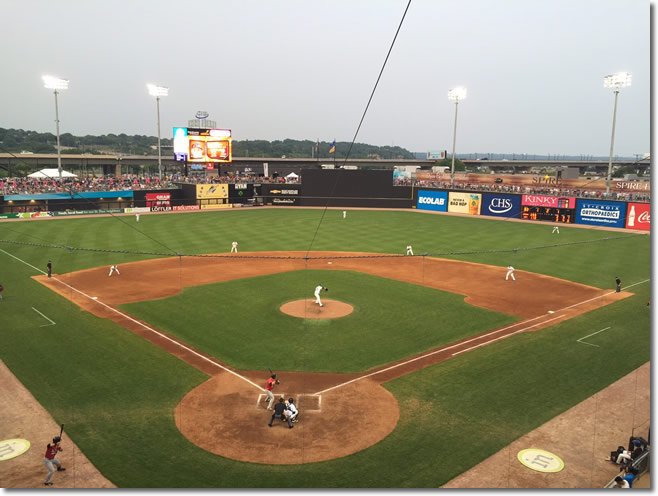 |
| The St. Paul Saints opened CHS Field in the Lowertown part of the city in May and are using water from the roof of the adjacent Metro Transit light-rail Green Line Operations and Maintenance Facility. The water is treated inside the ballpark and used to irrigate the field and flush toilets in the restrooms beyond the center-field fence. |
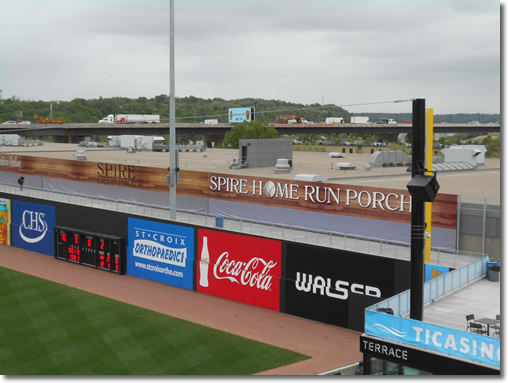 |
Sports arenas and ballparks strive for a fan-friendly experience as new structures are erected. The owners and designers also value sustainability in the construction.
In 2010 the Minnesota Twins moved from the sterile atmosphere of the Metrodome, with its roof and artificial turf, into an outdoor ballpark with real grass. The grass wasn’t the only green feature. The Twins worked with several partners to make sure their new home, Target Field, was green in an environmental sense.
Target Field was built with a system designed to capture and treat stormwater and use it for irrigation and cleaning. Because of these and other efforts, Target Field became only the second major professional stadium to become LEED (Leadership in Energy and Environmental Design) Silver Certified by the U. S. Green Building Council.
Since that time the St. Paul Saints baseball team and the city of St. Paul have constructed CHS Field, which opened in the spring of 2015 in the Lowertown area of the city. Similar to the Twins at Target Field, the Saints incorporated a system of using rainwater for irrigating their field.
In this case, the rainwater comes from the roof of the adjacent Metro Transit light-rail Green Line Operations and Maintenance Facility (OMF). This building, which opened in 2014, incorporates a number of sustainable features, such as automated heating and cooling controls as well as exhaust systems with energy-recovery technology. With CHS Field being built to the north of the Metro Transit facility, the groups got together and found a way to transfer rainwater from one facility to the other.
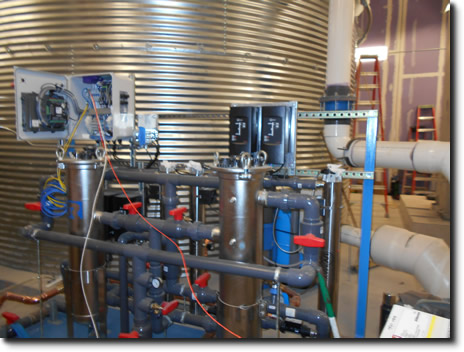 |
| The treatment system within CHS Field. |
The north-central part of the OMF roof (an area covering about ¾ of an acre) has drains to capture the water, which is cleaner than water running off streets and parking lots. Pipes under the OMF roof transfer the rainwater through the walls of the maintenance facility and the ballpark. Within CHS field is a 27,000-gallon cistern, which stores the water. A vortex filter removes large particles. Another filter takes care of smaller particles after the water is pumped out of the cistern. The water is then disinfected with ultraviolet light. The treated water is used for watering the baseball field, which includes two acres of sod, and for flushing toilets in the center-field area.
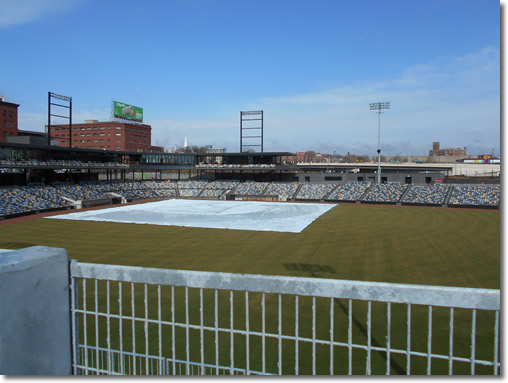 |
| A view of CHS Field from the roof of the Metro Transit Green Line Operations and Maintenance facility. |
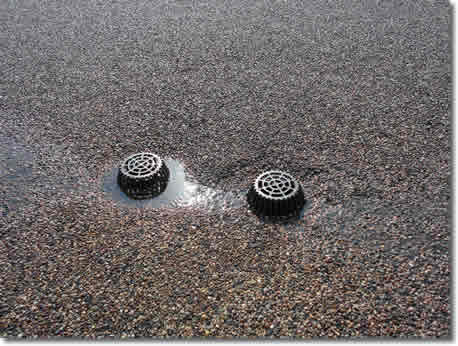 |
| Drains (above) on the roof of the Green Line Operations and Maintenance Facility take the water to pipes beneath the building, which transfer it to CHS Field. |
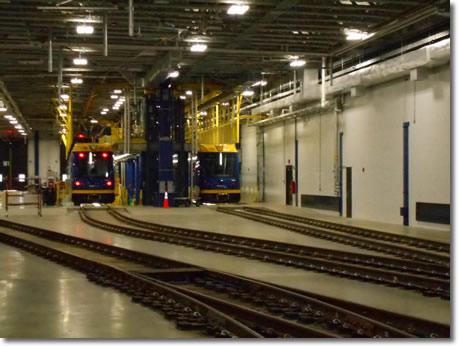 |
In addition to saving approximately 450,000 gallons of municipal water every year, the system promotes the value of water conservation. The Freshwater Society presented a Clean Water Champion 2015 award to the partners in the project, including the city of St. Paul, the St. Paul Saints, the Capitol Region Watershed District, and Metropolitan Council/Metro Transit.
Because of the expense, the Saints did not apply for LEED certification; however, Saints’ co-owner Mike Veeck said they have a 3B rating from the state, which is similar to LEED status, and are able to claim the designation of the greenest ballpark in the country.
“Of course, every new ballpark gets to say that for nine months,” Veeck added. “Then another one comes along and gets to make that claim.”
The cost of the rainwater harvesting system, funded through grants from the Minnesota Clean Water Land and Legacy Amendment funds, was approximately $300,000.
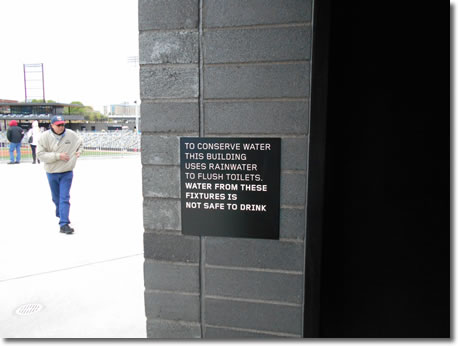 |
| A warning sign for anyone tempted to drink from the toilet. |
Go to top